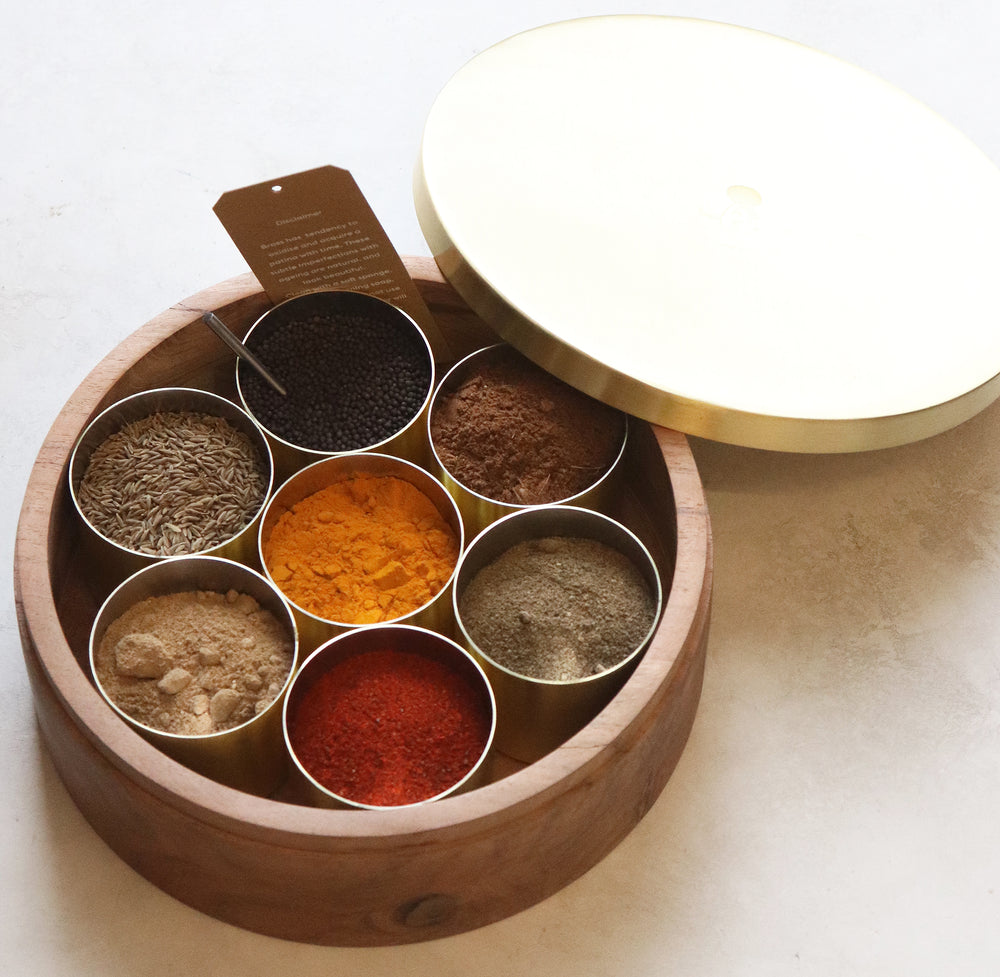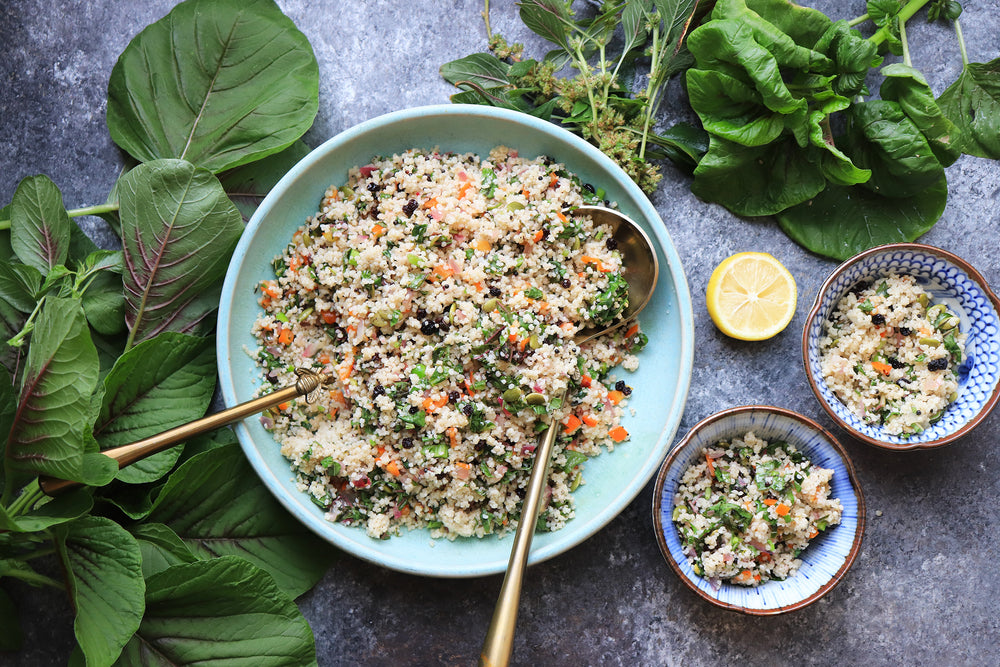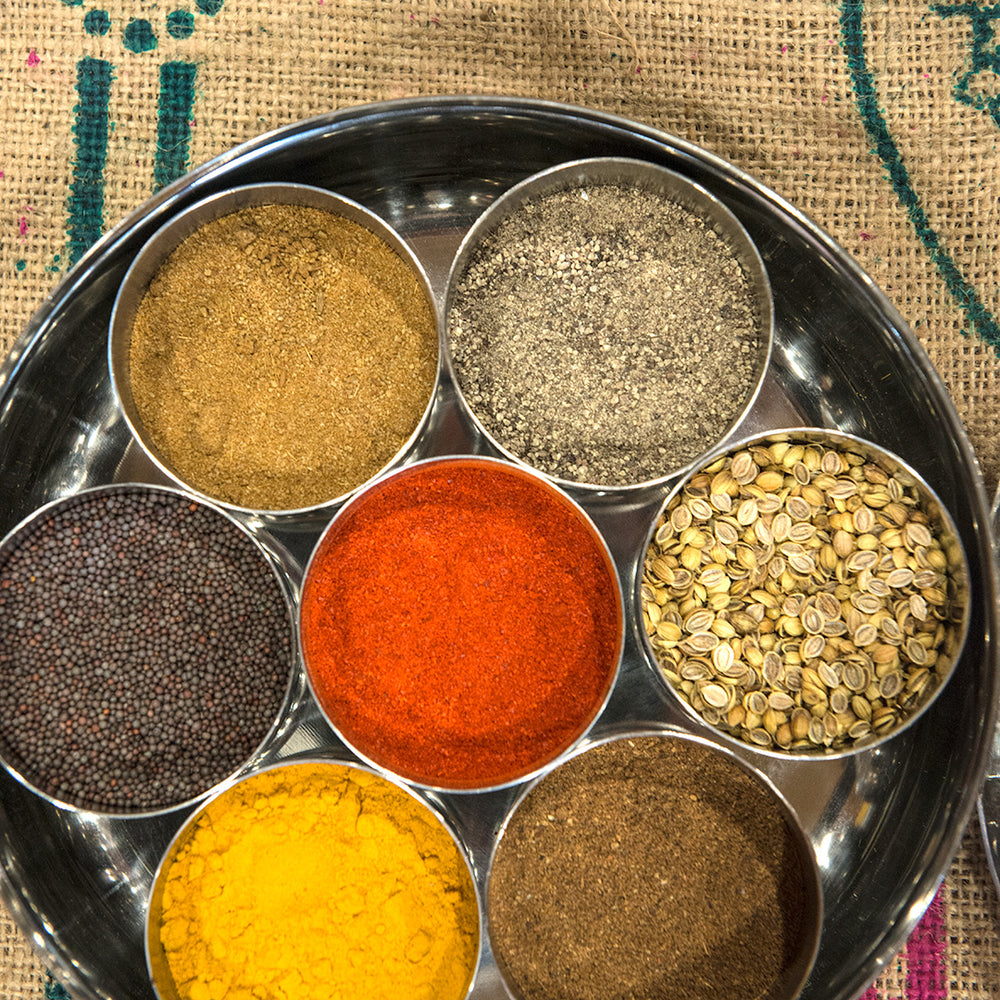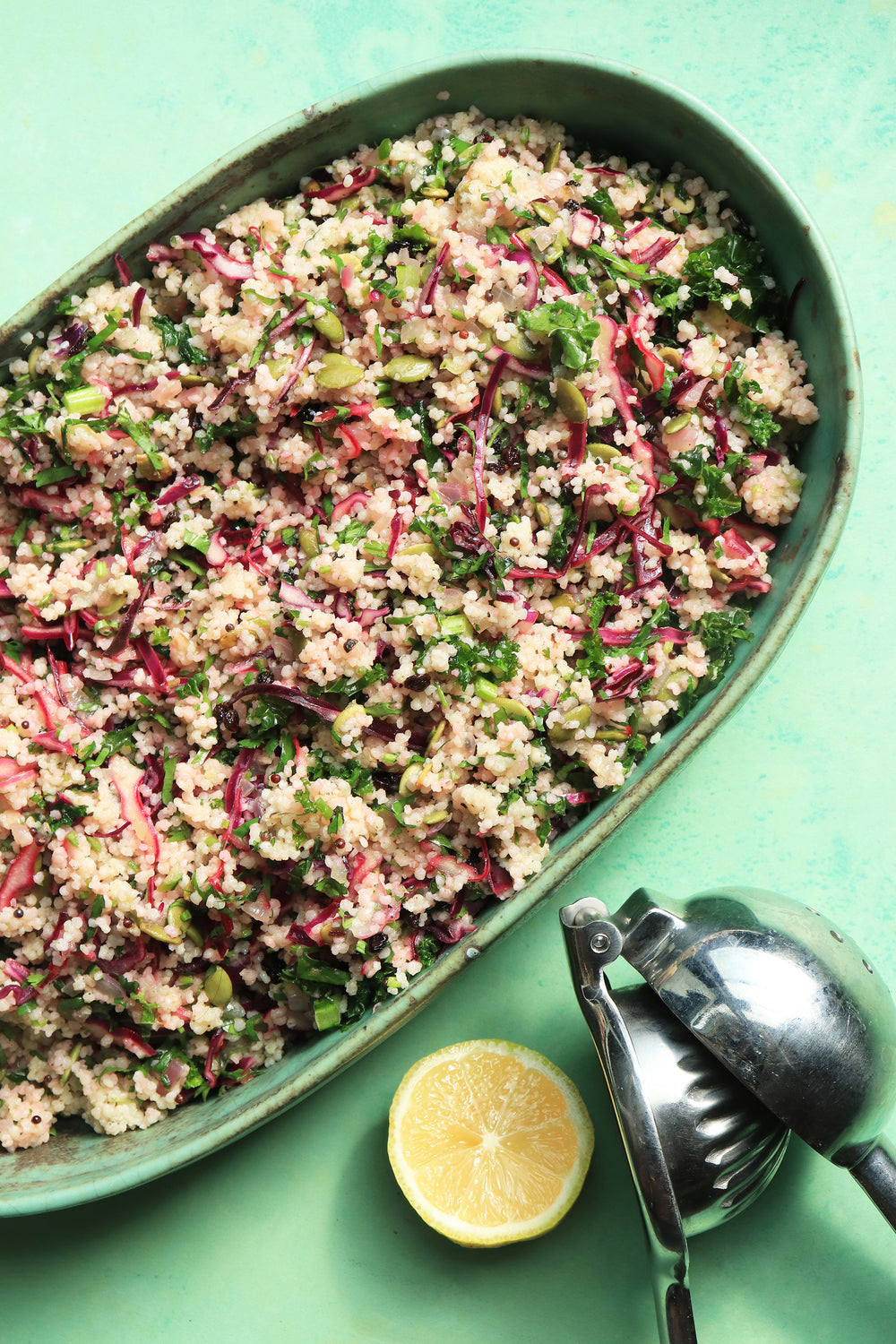
25 Min
DF
GF
NF
V
Amaranth Grain Salad
This summer, I decided to start a small vegetable and flower garden in my backyard. I planted tomatoes, peppers, herbs, and fennel, most of which, despite a summer of almost no rain, grew into healthy plants. I hovered over them like a new parent, moving them around to get the right amount of sun or shade. Some, like delicate herbs did not survive the harsh heat but the star of the garden turned out to be two innocuous looking amaranth plants a farmer at the weekend market persuaded me to buy. The drought resistant amaranth grains have been cultivated for millennia by the Aztec and certain parts of Asia and I have often bought the red tinged amaranth greens at Indian or Asian markets. The little plants blossomed quickly into tall gangly stalks, spread their seeds and I now have a mini amaranth farm in my backyard, bursting with bright green leaves, just waiting to be picked. Knowing the power of eating greens, daily, I look for ways to add it to my meals from stirring it into a curry, dal, salad, or a pilaf.
So, here is an amaranth pilaf made with another interesting high fiber grain, millet. Millet is very commonly eaten in India, whole in pilafs and stews or ground into rotis. A few weeks ago, I discovered a special variety called ‘Kodri’, very popular in Gujarat, the state in India where I grew up. It cooks fast, is easy to digest, high in protein and rich in phytochemicals. The Indians believe it helps control blood sugar and other related conditions. But the real reason to eat it is that it is so delicious, it may be good enough to replace white rice!
This summer, I decided to start a small vegetable and flower garden in my backyard. I planted tomatoes, peppers, herbs, and fennel, most of which, despite a summer of almost no rain, grew into healthy plants. I hovered over them like a new parent, moving them around to get the right amount of sun or shade. Some, like delicate herbs did not survive the harsh heat but the star of the garden turned out to be two innocuous looking amaranth plants a farmer at the weekend market persuaded me to buy. The drought resistant amaranth grains have been cultivated for millennia by the Aztec and certain parts of Asia and I have often bought the red tinged amaranth greens at Indian or Asian markets. The little plants blossomed quickly into tall gangly stalks, spread their seeds and I now have a mini amaranth farm in my backyard, bursting with bright green leaves, just waiting to be picked. Knowing the power of eating greens, daily, I look for ways to add it to my meals from stirring it into a curry, dal, salad, or a pilaf.
So, here is an amaranth pilaf made with another interesting high fiber grain, millet. Millet is very commonly eaten in India, whole in pilafs and stews or ground into rotis. A few weeks ago, I discovered a special variety called ‘Kodri’, very popular in Gujarat, the state in India where I grew up. It cooks fast, is easy to digest, high in protein and rich in phytochemicals. The Indians believe it helps control blood sugar and other related conditions. But the real reason to eat it is that it is so delicious, it may be good enough to replace white rice!

25 Minutes
6

Notes & Variations
- Kodri millet also goes by the name Kodo millet and can be purchased at Indian grocers or online. Make sure you are buying the hulled millet since it cooks a lot faster.
- If using a heartier green like kale, you may need to sauté it briefly before adding it to the millet.
- Kari leaves are not essential to this recipe, feel free to leave out or replace with finely minced lemongrass or the zest of a lemon.

Notes & Variations
- Kodri millet also goes by the name Kodo millet and can be purchased at Indian grocers or online. Make sure you are buying the hulled millet since it cooks a lot faster.
- If using a heartier green like kale, you may need to sauté it briefly before adding it to the millet.
- Kari leaves are not essential to this recipe, feel free to leave out or replace with finely minced lemongrass or the zest of a lemon.
Tags:

Stock Your Pantry
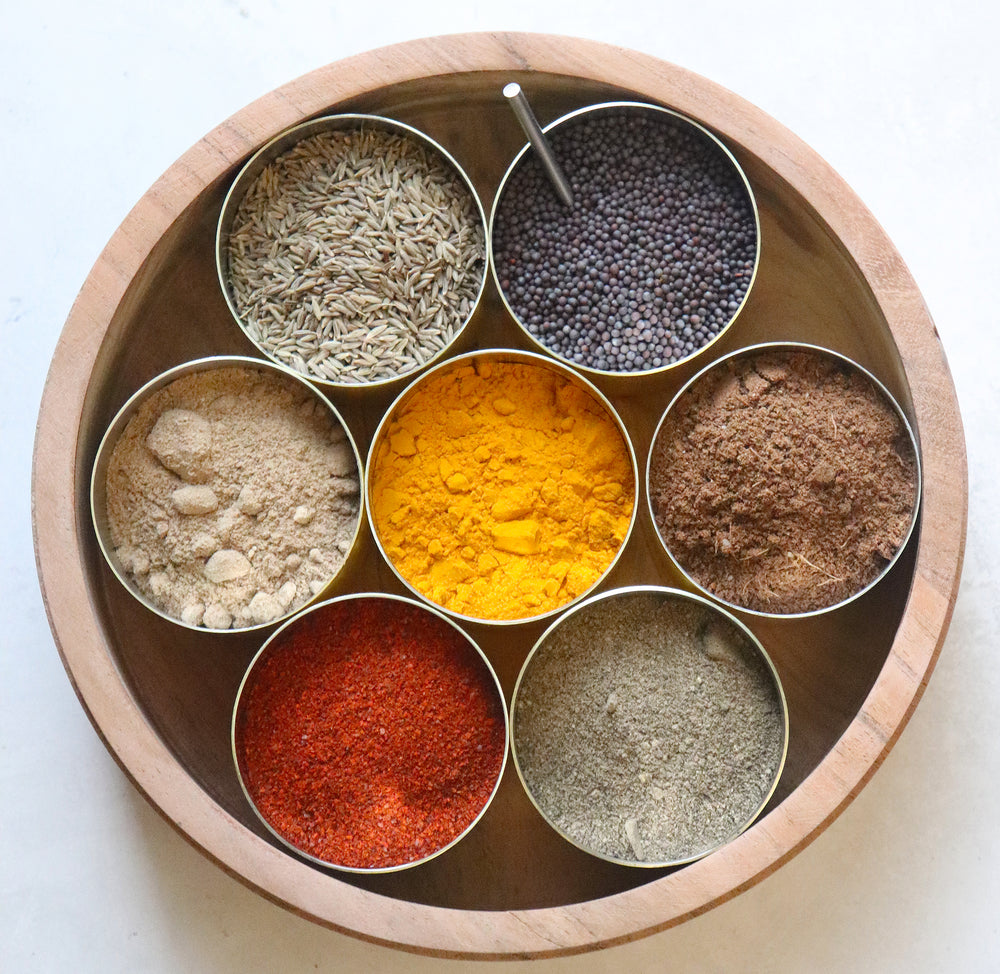
A handmade spice box containing red chile, turmeric, black pepper, cumin seeds, mustard seeds, amchur and garam masala.
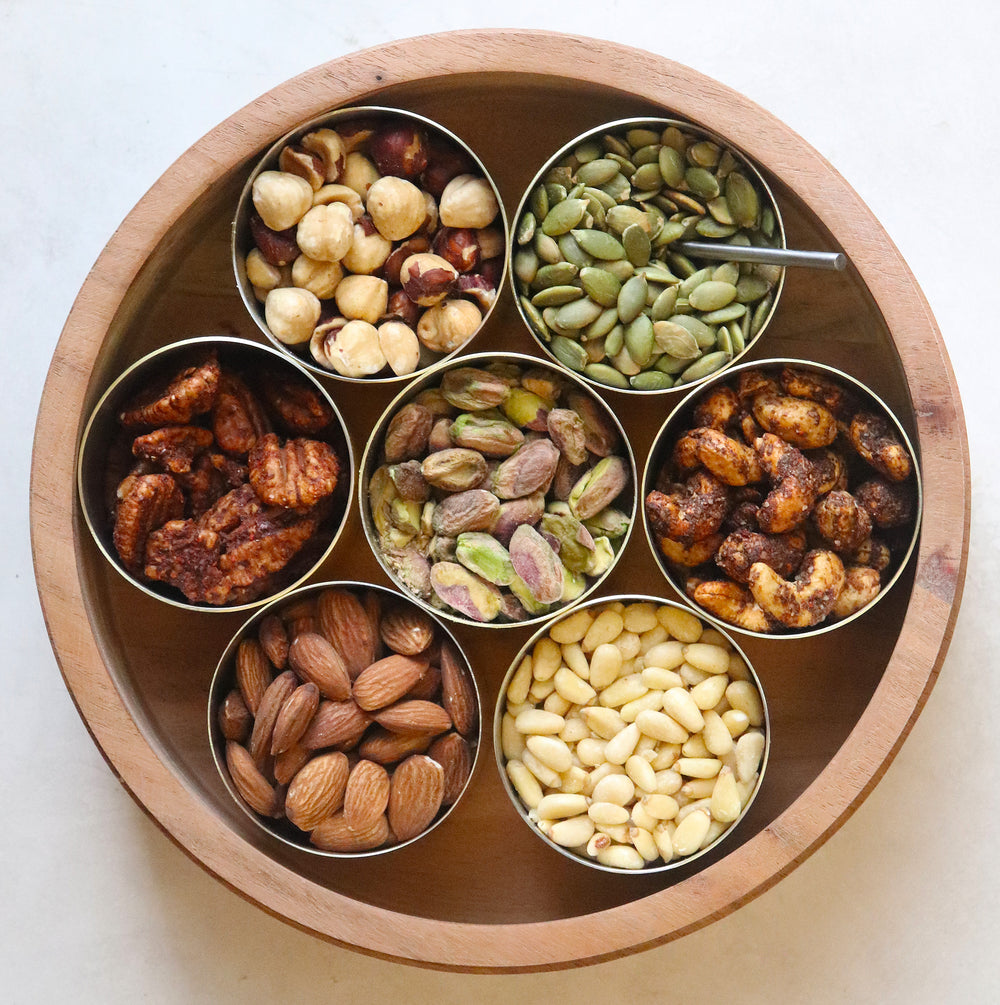
A handmade spice box containing masala cashews, spiced walnuts, pumpkin & sesame seeds, pine nuts, masala pistachios, hazelnuts & almonds.
Tags:

Stock Your Pantry
